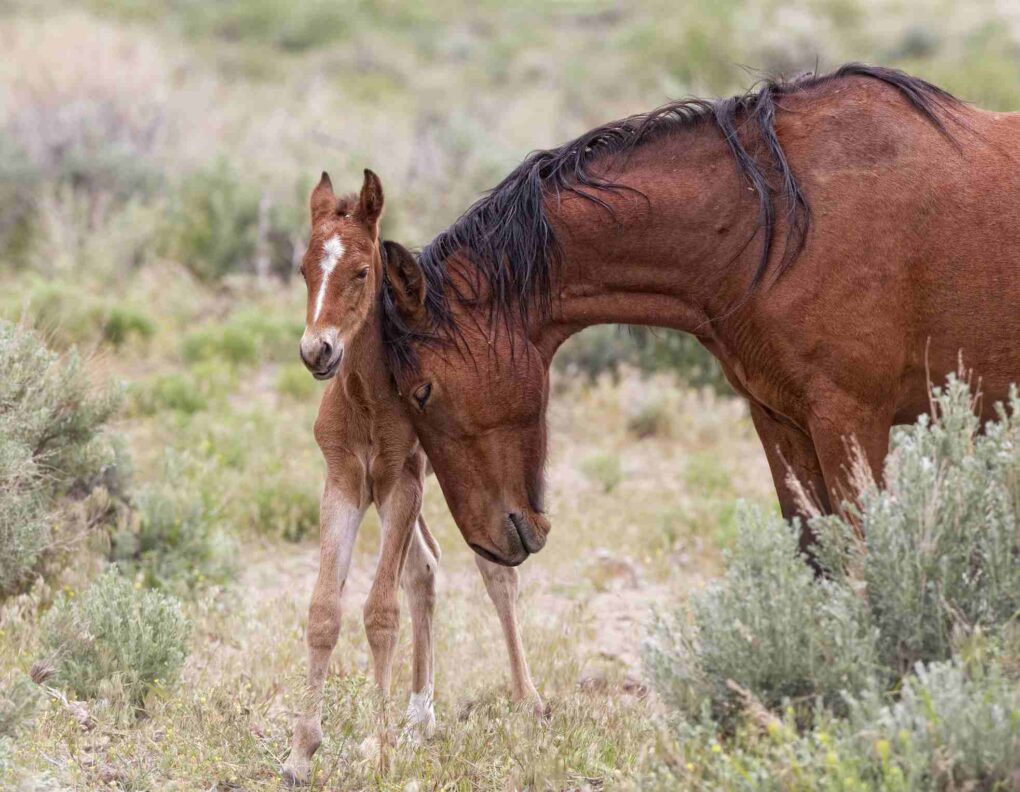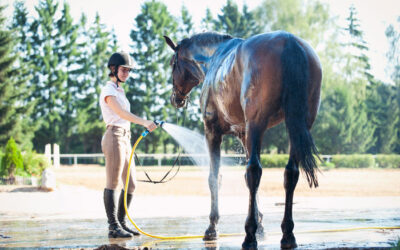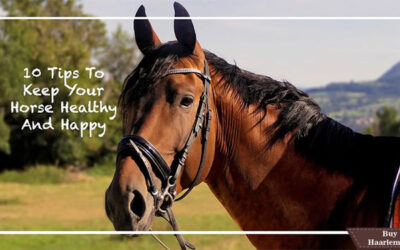
After-birth Behavior of Foals
Taking Care of the Newborn Foal
If you were there when the foal was born, the first thing you should do was check to see if it was breathing. Remove the birth sack (amnion) from the foal’s head as you quietly approach the foaling location. Your task is over if the foal is breathing, therefore you can leave the area where the mare is giving birth and keep an eye on the mare and foal from a distance. This gives the mare and foal some private time to rest after giving birth and form social bonds. If the foal does not start breathing on its own, you can encourage the respiratory reflex by blowing into the foal’s mouth or tickling its nostril with a piece of grass or straw. Try vigorously massaging the foal, pressing on its ribs, or raising it about one foot off the ground and dropping it if the foal is still not breathing. These techniques typically give the foal a mild jolt and start its breathing.
A normal, healthy foal rolls onto its chest a few seconds after birth and elevates its head and neck. After then, the foal starts to creep away from its mother. The foal’s movements typically cause the naval (umbilical) cord to be severed if the mare has not yet stood up. Wait for the mare or foal to cut the umbilical cord before proceeding. Because it is believed that the foal obtains blood from the placenta after delivery, the umbilical cord should not be severed right away. The foal may experience circulatory issues if the chord is cut prior to this blood transfer. The terms “dummy” or “wanderer” foals are commonly used to describe foals with circulatory issues since they frequently act stupid and may experience convulsions.
After the umbilical cord has severed, the stump should be soaked in a moderate solution of 1–2% iodine. Iodine dries up the umbilical stump and stops bacteria from moving up the stump and into the body of the foal. Shigellosis, naval ill, joint ill, or polyarthritis are a few terms for a systemic infection brought on by bacteria that enter the foal by the umbilical stump. Foals that contract this infection have severe disease or even pass away, and their joints enlarge and change shape.
After delivery, you should check the naval stump several days later to make sure it is still dry. It is possible for the fetal urine channel from the bladder to the umbilical (the urachus) to still be open if pee is trickling from the stump. The urachus normally shuts down at birth. A veterinarian should treat the foal if it doesn’t close, which is a condition known as “persistent urachus.”
Within an hour after birth, foals typically stand. The foal struggles to balance during its first efforts at standing and frequently moves its head, neck, and feet. It’s okay for the foal to wobble at this point; you should let it stand by itself. It can tear tendons and ligaments and disrupt the bonding process between the mare and the foal to lift the foal onto its feet before its legs are strong enough to support it.
Nursing
The foal should start trying to nurse once it is standing. The mare’s torso and front and hind legs meet there, and the foal naturally looks there for the udder. Again, you should avoid the urge to “help” the foal. The exploration process that takes place when the foal finds the udder is normal. The mare-foal link is hampered by human meddling during the foal’s initial nursing efforts, which could actually hinder the foal’s development in discovering the udder. However, it is necessary to intervene if the foal has not nursed by two hours after delivery or if the mare is actively rejecting the foal’s attempts to nurse. Aid the foal in rising, then gently lead it to the mare’s udder. Coat your fingers and the mare’s teats with a few drops of colostrum (the mare’s first milk), which you should hand milk. Obtain the colostrum-coated finger of the foal to suck, then move it gently toward the mare’s teat. In order to get the foal to switch to the teat, slowly remove your finger from its mouth. Before the foal transitions to the teat, this process might need to be performed numerous times. Rarely, it takes numerous nursing sessions of restraint on a young mare or a mare with a sensitive, swollen udder before she agrees to let the foal nurse. You should call your veterinarian to sedate the mare if she still rejects the foal after a few nursing sessions. The majority of foal rejection issues can be resolved by keeping the mare sedated for a couple of days. Keep in mind to exercise utmost caution if you are around a foal. When they believe their foal is in danger, normally calm, gentle mares can turn violent and protective.
New Foul Checklist
Your mare and foal’s health can be improved with the help of a few straightforward post-foaling care techniques. Following is a list.
- Verify the foal’s respiration.
- Apply iodine to the foal’s stumped umbilical cord.
- As soon as possible after delivery, make sure the foal—including orphan foals—receives colostrum.
- Assure the foal receives either colostrum or an injection of tetanus antitoxin to provide tetanus protection.
- Make sure the foal passes the meconium, and address diarrhea or constipation as soon as possible.
- For several days, look for urine on the stump of the umbilical cord.
- Make sure the foal’s eyelashes and lids are pointing outward.
- Regarding any limb abnormalities and hernias, heed the advise of your veterinarian.
- Verify the afterbirth is completely expelled by the mare and make sure it is.
- Several days after giving birth, observe the mare for any indication of a reproductive tract infection.
This post-foaling checklist may seem like a lot of work to horse owners who have never raised a foal. But once you’ve completed these management tasks, which only take a short while, you can unwind and enjoy your brand-new foal with confidence that you’ve done everything possible to maintain its wellbeing.




